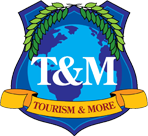The tourism time-experience continuum
July 2005
Many tourism centers falsely believe that they are selling a tourism product. Nothing could be further from the truth. Tourism is about the selling of memories and the creation of experiences. In fact, it is the tourism experience that is the one unique thing that a tourism destination or travel product has that can differentiate it from its competition. While tourism and travel professionals often believe that they are selling a product, be that product transportation, lodging or an event, in reality what our clients are seeking is the “memory of the experience.” In a world where modern technology allows the reproduction of products and many travelers know the layout of hotels even before arriving, the one thing that differentiates one place from another is the human experience. In such a world of rapid replication, service becomes not only a means to deliver the product but an essential ingredient in creating the product itself. To help you find new ways to deliver the best tourism and travel experience to your guests, here are a number of ideas to consider.
- Broaden your scope regarding who is your competition. Most tourism products only tend to see their competition as other tourism products. In reality, nothing could be further from the truth. Tourism is a leisure time industry, thus anything that competes for the leisure time dollar is our competition. Is travel a good value for the consumer’s money? Are you seeking anyone who has leisure time or are you going after only those who have decided to travel?
- The 911 syndrome is more than merely providing safety and security. While safety and security concerns are now a permanent part of the tourism and travel world, it produced other residual effects that will be with tourism for a long time. For example, our customers more than ever seek hassle free experiences. Visitors want easy and the more complicated tourism centers make the visitor experience the greater the possibility of loss of customer loyalty.
- Tourism is a customer driven experience. In the last few years too many tourism and visitor centers have worked hard at driving their customers from human-based experiences to web page experiences. The logic behind this move is that it will save large corporations such as airlines a great deal of money on wages. The risk that these companies will have to consider is that tourists develop relationships with people rather than web sites. As tourist and traveler corporations drive people to web sites, they should be ready to accept the fact that customer loyalty will decrease and that their frontline personnel’s actions become even more important.
- Our most loyal and valuable customers are often those who have had the best experience. All too often, and despite of customer loyalty programs such as those used by the airlines, tourism entities forget to work at keeping their most loyal customers. These are the people who may provide up to 80% of your business. Do your employees realize that these people’s businesses assure their jobs? Think through what specific services and products your most loyal customers desire and what you need to offer to keep their business. Never forget that these are the people who are most likely to be targeted by your competition.
- Recognize that, just as Einstein noted the “time-place continuum,” so the new currency of travel & tourism is the ” tourism time-experience” continuum. Once upon a time a tourism destination could succeed by offering product value for price. In the current world of travel, it is the call of the present tense that is important. Today’s tourists want to know answers to such questions as: How does the tourism product touch my emotions, how will the experience change my life, and how much time will this experience cost me?
- Anyone can give good service; successful tourism enterprises will offer “experiential-service.” Experiential service means that good service is not the objective but rather is seen as part of the overall visitor experience. Experiential service is the combination of a number of components that come together to create the visitor experience. Among these are the qualities of product, the quality of the tourism environment, the relationship between expectations of a marketing campaign and the actual experience, and the interaction not only of employees and guests but also between employees. For example, do the people who work and serve the public want to succeed or are they merely seeking a steady paycheck? Develop ways in which you give people good value for their tourism dollar.
- Recognize that when a destination chooses to reinvent itself it is altering the experience. Before embarking on a major new marketing campaign, take the time to consider the impact of this marketing campaign on the tourism experience. Will the experiential service meet the new goals of the marketing campaign? Where will this new marketing campaign fit into the time-experience continuum?
- Make sure that your see your tourism product in the same light as your customers see it. For example, you may say that you are a family destination, but if your customers view you from another perspective, it will take a tremendous amount of marketing change the image. Before launching a new marketing campaign, consider how your destination makes its clientele feel, why people chose your destination over the competition, and what emotional benefits do your visitors receive when they chose your destination.
- Expand your knowledge base. Often people in tourism spend so much time in dealing with marketing that they forget that you cannot market what you do not know. The greater your knowledge base and the more education you have, the greater the chances that you will develop innovative approaches to old problems.
- Do not be too quick to slash prices. Tourism today is about personal experiences more than it is about prices. Where you price your destination says a tremendous amount about it. Often tourism is about prestige and once one enters into a downward price spiral, it is very hard to reverse the trend. Instead of slashing prices, think how you can give more value for the tourist dollar.



